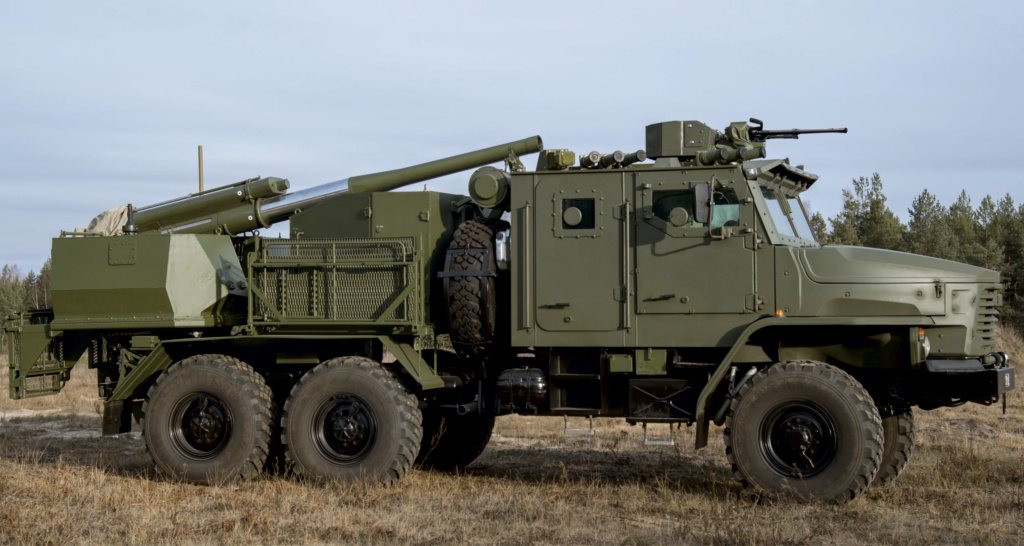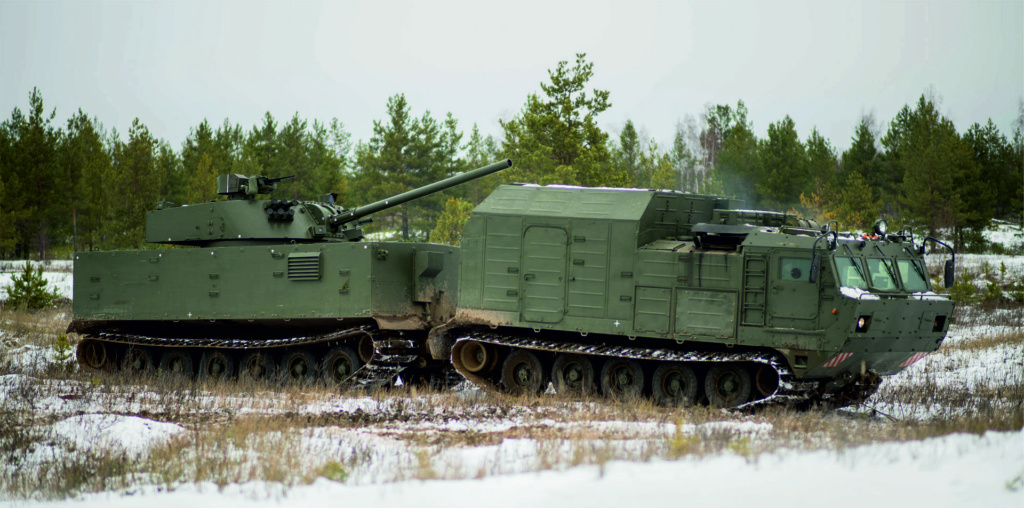+71
Scorpius
thegopnik
Podlodka77
Begome
sepheronx
xeno
par far
diabetus
Arrow
caveat emptor
Belisarius
galicije83
mnztr
Robert.V
Kiko
Cplnew83
BliTTzZ
limb
TMA1
marcellogo
Big_Gazza
Mir
hoom
Broski
Isos
Russian_Patriot_
Cheetah
ALAMO
Flanky
mavaff
lancelot
PhSt
elevonic
lyle6
kvs
AJ-47
LMFS
SeigSoloyvov
Hole
jhelb
miketheterrible
PapaDragon
RTN
Airman
ZoA
volna
Benya
VladimirSahin
KiloGolf
KoTeMoRe
ExBeobachter1987
Mindstorm
Regular
JohninMK
eehnie
flamming_python
franco
Vann7
d_taddei2
magnumcromagnon
Werewolf
collegeboy16
Sujoy
KomissarBojanchev
George1
TheArmenian
Cyberspec
medo
IronsightSniper
GarryB
Austin
75 posters
Russian Gun Artillery Thread

GarryB- Posts : 40553
Points : 41055
Join date : 2010-03-30
Location : New Zealand
- Post n°301
 Re: Russian Gun Artillery Thread
Re: Russian Gun Artillery Thread
They are developing a range of autonomous terminal guidance seekers for missiles like Hermes and this new air to ground missile on the Mi-28NM... one assumes something like that could be fitted to larger calibre artillery too.

RTN- Posts : 758
Points : 733
Join date : 2014-03-24
Location : Fairfield, CT
- Post n°302
 Re: Russian Gun Artillery Thread
Re: Russian Gun Artillery Thread
GarryB wrote:Note a CEP of 10m means a volley of shots fired by Coalition battery, means each gun could fire 6 or more shells at the target and all those shells will hit at once...
CEP of 10m is not that great unless of course you are using 160mm, 180mm, 203mm and 240mm calibre shells. On the other hand Excalibur has a CEP < 4 meters. So a single 155mm shot ensures that the target is take out.
BTW - Why is the Russian Army still using 160mm, 203mm and 240mm shells ? World has moved onto 155mm shells a long time ago. Makes perfect sense. You can use these shells with the M-777 light howitzers and PzH 2000 self propelled howitzers.
GarryB wrote:And while the US is busting their budget with guided shells like the very expensive Excalibur... which costs 10 times more than Metis BTW,
Granted that Excalibur is expensive. But why would you suggest that Russian GLONASS guided artillery shells will be much cheaper ?

RTN- Posts : 758
Points : 733
Join date : 2014-03-24
Location : Fairfield, CT
- Post n°303
 Re: Russian Gun Artillery Thread
Re: Russian Gun Artillery Thread
magnumcromagnon wrote:
GLONASS shells have existed since 2011, and they've been discussed in dozens of threads, and their 25 to 40 times cheaper than the US GPS equivalent shells.
I could not find any thread dedicated to GLONASS guided artillery shell in this forum.
Cheaper than US versions by 25 to 40 multiple ? That's not possible. Essentially the same tech. How come they are so cheap ?

GarryB- Posts : 40553
Points : 41055
Join date : 2010-03-30
Location : New Zealand
- Post n°304
 Re: Russian Gun Artillery Thread
Re: Russian Gun Artillery Thread
CEP of 10m is not that great unless of course you are using 160mm, 180mm, 203mm and 240mm calibre shells. On the other hand Excalibur has a CEP < 4 meters. So a single 155mm shot ensures that the target is take out.
It is going to be the standard fuse for their 152mm shells, so all standard and long range shells will get this level of performance.
There are targets a single 155mm shell is not good enough to take out on its own.
BTW - Why is the Russian Army still using 160mm, 203mm and 240mm shells ?
Why is the US Army using M113s?
They returned 203mm and 240mm calibre weapons for specific roles, and AFAIK the 160mm mortars have never left their mountain unit arsenals.
World has moved onto 155mm shells a long time ago. Makes perfect sense.
Why would Russia adopt a foreign calibre? Their 152mm calibre guns are fine.
You can use these shells with the M-777 light howitzers and PzH 2000 self propelled howitzers.
Russia doesn't have or make either of those.
Granted that Excalibur is expensive. But why would you suggest that Russian GLONASS guided artillery shells will be much cheaper ?
Because they revealed the price a few years ago and they are much much cheaper... the fuse system is about $1,000 which is 50-80 times cheaper than Excalibur... but Excalibur is a complete round, while the Russian system is a fuse and guidance system that can be attached to the nose of any 152mm calibre round.
Cheaper than US versions by 25 to 40 multiple ? That's not possible. Essentially the same tech. How come they are so cheap ?
They developed a way of controlling the shell without having to stop it from spinning, and it is not a complete round... it is a fuse and control surface kit that attaches to the nose fuse position of standard rounds.
You can attach it to already produced 152mm rounds or any type.
This is off topic BTW so will likely move some or all of it somewhere else.
1ffmm likes this post

miketheterrible- Posts : 7383
Points : 7341
Join date : 2016-11-06
- Post n°305
 Re: Russian Gun Artillery Thread
Re: Russian Gun Artillery Thread
RTN wrote:magnumcromagnon wrote:
GLONASS shells have existed since 2011, and they've been discussed in dozens of threads, and their 25 to 40 times cheaper than the US GPS equivalent shells.
I could not find any thread dedicated to GLONASS guided artillery shell in this forum.
Cheaper than US versions by 25 to 40 multiple ? That's not possible. Essentially the same tech. How come they are so cheap ?
Are you seriously asking this question?
Think hard for a moment.
No, the bombs aren't the same. Because one is made in Russia and one is made in USA. Tack on a multiplier for US made one vs Russian. Plus Glonass and GPS tracking devices are rather cheap these days.

jhelb- Posts : 1095
Points : 1196
Join date : 2015-04-04
Location : Previously: Belarus Currently: A Small Island No One Cares About
- Post n°306
 Re: Russian Gun Artillery Thread
Re: Russian Gun Artillery Thread
GarryB wrote:They are developing a range of autonomous terminal guidance seekers for missiles like Hermes and this new air to ground missile on the Mi-28NM... one assumes something like that could be fitted to larger calibre artillery too.
And will these missiles be GLONASS guided ?

GarryB- Posts : 40553
Points : 41055
Join date : 2010-03-30
Location : New Zealand
- Post n°307
 Smart fuses for Russian artillery
Smart fuses for Russian artillery
There were plans to include Glonass in some of the seekers... the advantage of which is that a forward deployed unit could passively locate targets and pass their coordinates to HQ via the Ratnik super soldier system... with this information passed from HQ to a platform on the battlefield near those coordinates they could launch in this case a Hermes missile which will head to the target location... as it approaches it can turn on its TV or IIR seeker to find the target and then hit it directly. Or with a cheap optical guidance system it can look for a laser spot on the target from a nearby unit or UAV. Or it could scan with its MMW radar seeker and find the target and hit it that way.
If the platform is a Coalition battery then firing off a salvo of cheap GLONASS guided shells... HQ could simply generate a grid around the target coordinates... which might be a platoon of enemy soldiers dug in to position or in buildings... the HQ creates a grid around that position with a 4m or 5m grid base and then order that Coalition battery to fire two rounds at each node of the grid all to impact at the same time, with airburst shells bursting at 2m altitudes for troops in the open or in open topped trenches, or delay fuses for buildings and trenches with roof cover...
Excalibur would be far too expensive for such area targets because you will know the location and the extent of the trenches but you wont know where the people are, so you just need an even coverage on target to arrive together so there is no time to take cover.
Once they take cover you will need thousands of rounds and days to get them all.
If the platform is a Coalition battery then firing off a salvo of cheap GLONASS guided shells... HQ could simply generate a grid around the target coordinates... which might be a platoon of enemy soldiers dug in to position or in buildings... the HQ creates a grid around that position with a 4m or 5m grid base and then order that Coalition battery to fire two rounds at each node of the grid all to impact at the same time, with airburst shells bursting at 2m altitudes for troops in the open or in open topped trenches, or delay fuses for buildings and trenches with roof cover...
Excalibur would be far too expensive for such area targets because you will know the location and the extent of the trenches but you wont know where the people are, so you just need an even coverage on target to arrive together so there is no time to take cover.
Once they take cover you will need thousands of rounds and days to get them all.

George1- Posts : 18523
Points : 19028
Join date : 2011-12-22
Location : Greece
- Post n°308
 Re: Russian Gun Artillery Thread
Re: Russian Gun Artillery Thread
Production and modernization of self-propelled artillery at Uraltransmash
The RIA Novosti news agency published an interview with Dmitry Semizorov, Director General of JSC Ural Transport Engineering Plant JSC (Uraltransmash, Yekaterinburg, part of JSC Uralvagonzavod Scientific Industrial Corporation).
The only factory for the serial production of artillery equipment Uraltransmash is completing the modernization of one of the most powerful cannons in the world, Malka, and is preparing to launch a promising artillery installation Coalition-SV. The director general of the enterprise Dmitry Semizorov, in an interview with RIA Novosti columnist Alexei Panshin, spoke about plans for the production of promising guns for the Armed Forces, the replacement of Ukrainian components on existing gun mounts, as well as the main civilian activity - trams.
- Dmitry Yuryevich, the year is coming to an end. What are its preliminary results?
- Our factory is unique and is the only enterprise for the serial production of self-propelled artillery equipment. In 2014-2015, there was a sharp decrease in orders, and a very large credit load fell on the enterprise. Now the situation is leveling out, and indicators are improving from year to year. Profitability growth will be from 10 to 12%. As for the state defense order, we fulfill it fully and on time.
- And for the products?
- The outgoing year was very eventful both in terms of military products and civilian. In particular, the first experimental batch of the latest 2S35 Coalition-SV self-propelled artillery mounts is ready for shipment. If we talk about the citizen, then we almost mastered the mass production of a line of low-floor trams that are 100% compliant with the Accessible Environment program. Tests of one and two-section trams are completed, now three-section is being tested. I think that in December we will finish this work completely and will be ready to supply modern and state-of-the-art trams for municipalities and regions.
- Now to defense topics. When will the modernization process of Malki and Tulip be completed? When will you start supplying modernized products to the Russian army?
- We are already supplying modernized Tulips. As for the Malki, in December of this year we are completing a major overhaul with a deep modernization of the gun: import substitution was carried out and new instrument complexes were installed. Over the next year, we will prepare production for serial production of these artillery systems.
- Now at the enterprise one more major work is bringing Msta-S to the level of SM. How is this contract implemented, when are you planning to complete it, and how do you see the prospects for further modernization of these machines, given the emergence of the Coalition?
- We completed the modernization work and now we are supplying modernized artillery systems to the troops. The plan for 2019 was completely closed and work has already begun on the volume of 2020. If we continue to do this, then we will be able to close the volumes of 2020 even in its first half.
Now about the appearance of the "Coalition" and everything else. "Coalition" is the machine of the future. Today it is ahead of the time, so the need for existing models from 2S3M (Acacia) to 2S19M2 (Msta-SM) will be for a long time to come. It seems to me that the basis of the fleet of self-propelled artillery mounts in this caliber will be precisely the 2S19M1 (Msta-S) models and the modernized 2S19M2, which simply have a huge modernization potential.
- And in what is this potential measured?
- The car will be more maneuverable and faster. We look forward to the emergence of new ammunition and are working on this with enterprises in the ammunition industry. In addition, a lot of work is underway to increase the reliability of this machine, so I think that the installation will maintain the status of the main combat system for a very long time.
- What the design bureau is working on now?
- We are now completing a major overhaul with the modernization of the 2S3M product, we are thinking about a wheeled chassis for products in caliber 152 mm, and in addition, we should not forget that in the interests of foreign customers, our design bureau developed a 2S19M1-155 machine in caliber 155 mm.
- Is this for India?
- For any foreign customers who will open tenders for this type of weapons in 2020. In comparison with analogues, our car will be cheaper and more reliable.
- And what is the reason for the transition to a wheeled chassis? Recently, it has become mainstream.
- The wheeled chassis allows you to save existing roads from destruction without loss of maneuverability. Plus, there is a need for such machines from our main customer.
- How is the process of import substitution in products for the Armed Forces?
- If we take the same “Malka” as an example, then we conducted a complete import substitution in it. We replaced the on-board gearbox, which was previously produced in Kharkov, with a domestic one, replaced the power plant, which was also Ukrainian. We carried out import substitution in guidance systems, a complex of protection of the machine itself. Now the modernized Malka is in the field and is successfully undergoing tests.
https://bmpd.livejournal.com/3876942.html

Hole- Posts : 11122
Points : 11100
Join date : 2018-03-24
Age : 48
Location : Scholzistan
- Post n°309
 Re: Russian Gun Artillery Thread
Re: Russian Gun Artillery Thread

d_taddei2- Posts : 3028
Points : 3202
Join date : 2013-05-11
Location : Scotland Alba
- Post n°310
 Re: Russian Gun Artillery Thread
Re: Russian Gun Artillery Thread
Not bad but I think they should make a design more like 2B9 automatic mortar, u benefit from faster firing(good for shoot and scoot) and the bonus use of it in a direct fire role with anti armour rounds this system effectively already exists just need to mount it a tigr m or any other vehicle.
correction i didnt realise this was a 120mm mortar, but i will a fully automated system with direct fire could still be done, but i think a turret mount would be more suited for the smaller 2B9 82mm.
Last edited by d_taddei2 on Wed May 27, 2020 3:08 pm; edited 1 time in total

George1- Posts : 18523
Points : 19028
Join date : 2011-12-22
Location : Greece
- Post n°311
 Re: Russian Gun Artillery Thread
Re: Russian Gun Artillery Thread
Tests of a prototype 120 mm self-propelled mortar MZ-204 "Highlander"
As reported on May 26, 2020, the TASS news agency, the MZ-204 Highlander self-propelled mortar, developed on the basis of the Tiger multipurpose wheeled armored car, passed factory tests. This was stated by TASS General Director of the Military Industrial Company (VPK), which produces the Tiger, Alexander Krasovitsky.

A prototype of the 120 mm MZ-204 Highlander self-propelled mortar complex developed by PJSC Motovilikhinskiye Zavody based on the Tiger-M security car at the exposition of the Science and Technology Forum for Law Enforcement Advanced Technologies Scientific and Technical Forum. Krasnogorsk (Moscow region), May 2017 (c) sdelanounas.ru
“This project [Highlander] is at the stage of studying the results of factory tests of a prototype by specialists of law enforcement agencies,” Krasovitsky informed, noting that the work on creating the Highlander was carried out on an initiative basis.
As the head of the military-industrial complex noted, the MZ-204 Highlander self-propelled mortar is a Tiger armored car with a 120-mm artillery system mounted at the stern of the vehicle with electric guidance in elevation and azimuth. "The main advantage of this development over foreign counterparts is the location of the combat crew of the system inside the Tiger armored corps during firing," Krasovitsky said.
According to him, the Highlander operates in a fully automated mode and can receive target designation data from unmanned aerial vehicles. "The situation, the data about the goals are displayed on the color multifunctional LCD monitor of the calculation commander," added Krasovitsky.
The head of the military-industrial complex emphasized that the Highlander could use adjustable ammunition, in particular the 120-mm high-precision guided mine Gran.
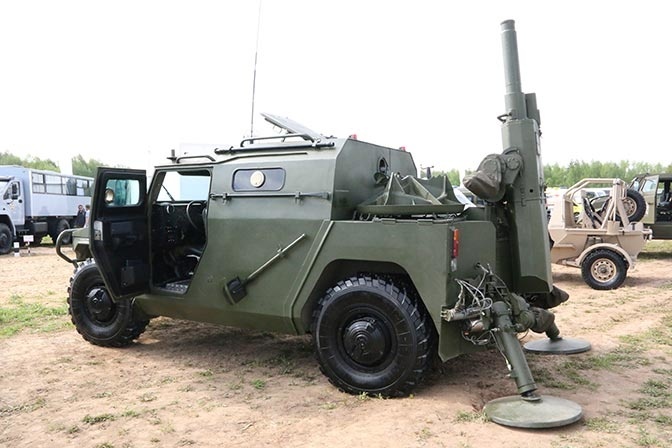
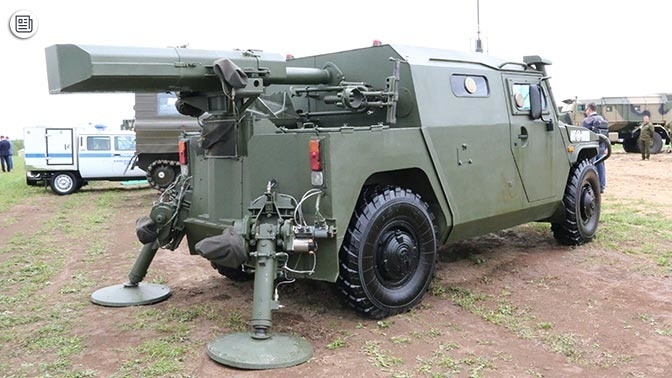

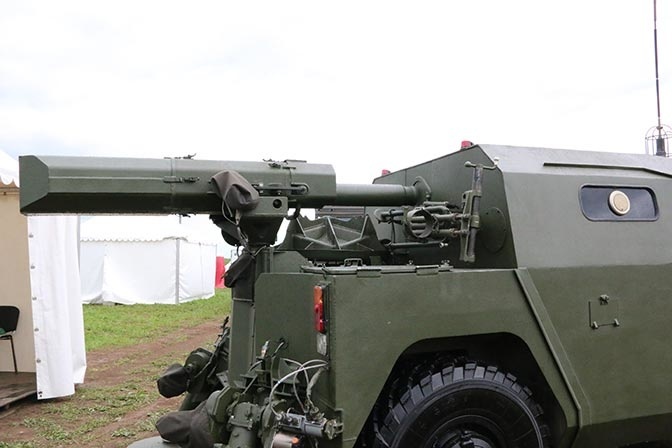
https://bmpd.livejournal.com/4039234.html
As reported on May 26, 2020, the TASS news agency, the MZ-204 Highlander self-propelled mortar, developed on the basis of the Tiger multipurpose wheeled armored car, passed factory tests. This was stated by TASS General Director of the Military Industrial Company (VPK), which produces the Tiger, Alexander Krasovitsky.

A prototype of the 120 mm MZ-204 Highlander self-propelled mortar complex developed by PJSC Motovilikhinskiye Zavody based on the Tiger-M security car at the exposition of the Science and Technology Forum for Law Enforcement Advanced Technologies Scientific and Technical Forum. Krasnogorsk (Moscow region), May 2017 (c) sdelanounas.ru
“This project [Highlander] is at the stage of studying the results of factory tests of a prototype by specialists of law enforcement agencies,” Krasovitsky informed, noting that the work on creating the Highlander was carried out on an initiative basis.
As the head of the military-industrial complex noted, the MZ-204 Highlander self-propelled mortar is a Tiger armored car with a 120-mm artillery system mounted at the stern of the vehicle with electric guidance in elevation and azimuth. "The main advantage of this development over foreign counterparts is the location of the combat crew of the system inside the Tiger armored corps during firing," Krasovitsky said.
According to him, the Highlander operates in a fully automated mode and can receive target designation data from unmanned aerial vehicles. "The situation, the data about the goals are displayed on the color multifunctional LCD monitor of the calculation commander," added Krasovitsky.
The head of the military-industrial complex emphasized that the Highlander could use adjustable ammunition, in particular the 120-mm high-precision guided mine Gran.




https://bmpd.livejournal.com/4039234.html

d_taddei2- Posts : 3028
Points : 3202
Join date : 2013-05-11
Location : Scotland Alba
- Post n°312
 Re: Russian Gun Artillery Thread
Re: Russian Gun Artillery Thread
George1 wrote:Tests of a prototype 120 mm self-propelled mortar MZ-204 "Highlander"
As reported on May 26, 2020, the TASS news agency, the MZ-204 Highlander self-propelled mortar, developed on the basis of the Tiger multipurpose wheeled armored car, passed factory tests. This was stated by TASS General Director of the Military Industrial Company (VPK), which produces the Tiger, Alexander Krasovitsky.
A prototype of the 120 mm MZ-204 Highlander self-propelled mortar complex developed by PJSC Motovilikhinskiye Zavody based on the Tiger-M security car at the exposition of the Science and Technology Forum for Law Enforcement Advanced Technologies Scientific and Technical Forum. Krasnogorsk (Moscow region), May 2017 (c) sdelanounas.ru
“This project [Highlander] is at the stage of studying the results of factory tests of a prototype by specialists of law enforcement agencies,” Krasovitsky informed, noting that the work on creating the Highlander was carried out on an initiative basis.
As the head of the military-industrial complex noted, the MZ-204 Highlander self-propelled mortar is a Tiger armored car with a 120-mm artillery system mounted at the stern of the vehicle with electric guidance in elevation and azimuth. "The main advantage of this development over foreign counterparts is the location of the combat crew of the system inside the Tiger armored corps during firing," Krasovitsky said.
According to him, the Highlander operates in a fully automated mode and can receive target designation data from unmanned aerial vehicles. "The situation, the data about the goals are displayed on the color multifunctional LCD monitor of the calculation commander," added Krasovitsky.
The head of the military-industrial complex emphasized that the Highlander could use adjustable ammunition, in particular the 120-mm high-precision guided mine Gran.
https://bmpd.livejournal.com/4039234.html
would have been good to see it in operation am curious how is being loaded, fired, etc. with Gran rounds this could be a good assassination weapon for high ranking officers attending the front lines.

GarryB- Posts : 40553
Points : 41055
Join date : 2010-03-30
Location : New Zealand
- Post n°313
 Re: Russian Gun Artillery Thread
Re: Russian Gun Artillery Thread
Looks like the crew in the cabin probably muzzle load it when the weapon is raised with the muzzle against the hole in the rear of the cabin...
My worry would be elevation limitations with the cabin located so close.
The base plate on the rear deck suggests the gun can be dismounted and used separately if needed I suspect.
Interesting...
The turret mounted model for the 120mm is obviously too big and bulky for such a light vehicle, but the bombs a 120mm fire are significantly bigger and heavier than an 82mm bomb... of course with an 82mm you could use a four round clip with a Vasilek and some sort of belt feed should be possible with a turret mounted gun, but I would suspect a 120mm is just too heavy for man handling more than one round at a time...
My worry would be elevation limitations with the cabin located so close.
The base plate on the rear deck suggests the gun can be dismounted and used separately if needed I suspect.
Interesting...
The turret mounted model for the 120mm is obviously too big and bulky for such a light vehicle, but the bombs a 120mm fire are significantly bigger and heavier than an 82mm bomb... of course with an 82mm you could use a four round clip with a Vasilek and some sort of belt feed should be possible with a turret mounted gun, but I would suspect a 120mm is just too heavy for man handling more than one round at a time...

Hole- Posts : 11122
Points : 11100
Join date : 2018-03-24
Age : 48
Location : Scholzistan
- Post n°314
 Re: Russian Gun Artillery Thread
Re: Russian Gun Artillery Thread

GarryB- Posts : 40553
Points : 41055
Join date : 2010-03-30
Location : New Zealand
- Post n°315
 Re: Russian Gun Artillery Thread
Re: Russian Gun Artillery Thread
Nice.
The BTR-80 series has very good mobility and adequate armour, and a 120mm mortar is a 120mm mortar... has plenty of punch.
The larger vehicle should be able to carry more ready to use ammo including guided missiles like Gran, and the modified Kitilov (122mm) previously used by the D-30 gun.
The new commanders cuppola with a machine gun mount is interesting too...
The BTR-80 series has very good mobility and adequate armour, and a 120mm mortar is a 120mm mortar... has plenty of punch.
The larger vehicle should be able to carry more ready to use ammo including guided missiles like Gran, and the modified Kitilov (122mm) previously used by the D-30 gun.
The new commanders cuppola with a machine gun mount is interesting too...

SeigSoloyvov- Posts : 3917
Points : 3895
Join date : 2016-04-08
- Post n°316
 Re: Russian Gun Artillery Thread
Re: Russian Gun Artillery Thread
Ah, that is a 2S23 Nona-SVK if anyone was wondering.
Last edited by SeigSoloyvov on Wed Jun 24, 2020 3:31 am; edited 1 time in total

GarryB- Posts : 40553
Points : 41055
Join date : 2010-03-30
Location : New Zealand
- Post n°317
 Re: Russian Gun Artillery Thread
Re: Russian Gun Artillery Thread
http://roe.ru/eng/catalog/land-forces/missile-systems-multiple-rocket-launchers-mrl-atgm-systems-and-field-artillery-guns/nona-svk/

GarryB- Posts : 40553
Points : 41055
Join date : 2010-03-30
Location : New Zealand
- Post n°318
 Re: Russian Gun Artillery Thread
Re: Russian Gun Artillery Thread
posted by Austin in 20/10/2011:
https://iz.ru/news/504342
From: October 19, 2011.
As you can see the Russian system is a nose mounted standard fuse used by ordinance 152mm and larger calibre that can be attached to existing or new rounds.
It does not stop the round spinning in flight and the accuracy is achieved independent of the distance the round travels.
The accuracy rating is less than 10m CEP, which is actually better than the 20m CEP given for Excalibur, though field testing showed the latter actually had a CEP of 4m.
For less than 1,000 dollars making each old 152mm artillery round a guided round is pretty damn cheap and does not require modification of the vehicle.
Obviously if the target location is beyond the range of the artillery being fired it wont hit its target and you wont be able to fire in the opposite direction to where the target is and still get a hit... clever but not magic.
https://iz.ru/news/504342
The Russian army will receive satellite guided missiles
ICB "Compass" has developed a way to modernize unguided artillery ammunition
The Moscow design Bureau Kompas — one of the main Russian developers of navigation tools for the Armed forces-has successfully tested the GLONASS navigation module for artillery ammunition.
The new module, created within the framework of the Dynamics program, can be installed both on new projectiles and on existing ones, a source in the military Department told Izvestia.
— The Compass development module can be screwed into the head of artillery shells with a caliber of 152 mm and higher, in the normal place of the fuse. It includes a combined fuse, a GLONASS signal receiver and control surfaces — aerodynamic rudders that unfold in flight and correct the trajectory of the projectile, - said the source of "Izvestia".
Unlike projectiles controlled by a laser beam, a projectile with the Dynamics module does not depend on weather conditions and does not require external illumination of the target, which allows you to quickly hit point targets with pre-known coordinates. The circular probable deflection of the projectile upgraded in this way does not exceed 10 m, while for conventional 152-mm projectiles at long ranges, it can be 100 m or more.
The Russian version of ammunition modernization allows making projectiles with satellite guidance much cheaper than the 155-mm Excalibur American projectile with GPS guidance. This projectile, equipped with a gas generator and built-in rudders, costs more than $ 80 thousand. It is assumed that in a large series, its price should fall to $50 thousand. The domestic module, which allows you to modernize existing ammunition depots, will cost a little more than $1 thousand, a source in the military-industrial complex explained to Izvestia.
— The module can be used for both old shells and new ones, but in any case it will be much cheaper than the American product. Russian scientists managed to achieve steady reception of the GLONASS signal on a rotating projectile, while the American "Excalibur" must stop its rotation to receive a navigation signal. This greatly complicates and increases the cost of its design — - said the source of the newspaper.
According to Viktor Murakhovsky, editor — in-chief of Arsenal, a specialized magazine, the new Russian design is a real revolution in artillery.
— With a new projectile, you can significantly reduce the consumption of ammunition. When firing conventional shells at a platoon strongpoint, you need 1,8 thousand shells, and here you will need ten times less. The accuracy of shooting upgraded projectiles does not decrease with distance — it will be the same regardless of whether we shoot at 5 km or 50 km. This allows you to instantly hit any targets, the main thing is to know their coordinates, which can be obtained from intelligence, drones and other sources, " the expert said.
Murakhovsky also noted that the low price of the module allows to equip artillery units with a large number of guided shells in a short time, while no additional modernization of the guns themselves will be required.
However, the head of the center for military forecasting Anatoly Tsyganok noted that for the effective use of such projectiles, the troops do not have enough accurate targeting systems.
— Deep reconnaissance solves other tasks, and no one will distract it to aim long-range artillery. Sputnik controls the entire battlefield and will also not be reconfigured for each gun, " Tsyganok said.
In his opinion, unmanned reconnaissance aircraft should aim high-precision missiles, which the Russian army does not yet have.
From: October 19, 2011.
As you can see the Russian system is a nose mounted standard fuse used by ordinance 152mm and larger calibre that can be attached to existing or new rounds.
It does not stop the round spinning in flight and the accuracy is achieved independent of the distance the round travels.
The accuracy rating is less than 10m CEP, which is actually better than the 20m CEP given for Excalibur, though field testing showed the latter actually had a CEP of 4m.
For less than 1,000 dollars making each old 152mm artillery round a guided round is pretty damn cheap and does not require modification of the vehicle.
Obviously if the target location is beyond the range of the artillery being fired it wont hit its target and you wont be able to fire in the opposite direction to where the target is and still get a hit... clever but not magic.
LMFS likes this post

George1- Posts : 18523
Points : 19028
Join date : 2011-12-22
Location : Greece
- Post n°319
 Re: Russian Gun Artillery Thread
Re: Russian Gun Artillery Thread
Central Research Institute "Burevestnik" programs
The TASS news agency under the heading "Weapons of crushing power. On the Russian artillery of the future and modern robots" has published extensive material in honor of the 50th anniversary of the creation of the Burevestnik Central Research Institute (TsNII) (Nizhny Novgorod) on July 2, 2020. Now this Russian parent company for the development of artillery weapons is part of the Uralvagonzavod concern of the Rostec state corporation.
"And today, a rifle is a highly effective means of armed warfare. It is capable of solving the tasks of engaging the enemy with fire in any conditions of the natural landscape, at any time of the day and time of the year, in any weather. At the same time, an artillery shell, unlike, for example, a rocket, more resistant to interference caused by enemy countermeasures, "said Georgy Zakamennykh, director general of the Burevestnik Central Research Institute, in honor of the anniversary of the enterprise, in an interview with TASS.
It is at this institute that a full cycle of creating artillery samples is carried out - from the idea to serial production. For all the time, a team of highly qualified designers, researchers and production workers has created more than 60 samples of weapons and military equipment. More than 600 topical research and development projects (R&D) were completed in the field of ship, field, tank and anti-tank artillery, as well as mortars and fire control systems.
On the prospect "attractive, but also unsafe"
According to the head of the Petrel, the development of artillery is in the direction of increasing the main tactical and technical characteristics:
firing range (by increasing ballistics, improving the shape of shells, using bottom gas generators and jet engines);
firing accuracy (by improving the means of preparation and support for firing, including those installed directly on the gun, the development of high-precision and reduced dispersion ammunition);
the power of the ammunition action (due to design optimization, the use of multifunctional fuses, promising explosive compositions and materials);
tactical mobility (due to the complete automation of the processes of preparation and firing of an individual weapon and the subunit as a whole; reduction of the deployment time at a firing position and leaving it, the time for preparing the first shot at an unplanned target, the implementation of new methods of firing - according to the maneuverable fire scheme, in mode "simultaneous fire raid").
Autonomous systems of topographic and geodetic referencing and navigation are being introduced, weapons are integrated into a single information and control field, the share of self-propelled samples, including wheeled ones, is increasing, and their maneuverable characteristics are increasing.
“One of the milestones here was the transition for us to build combat units of weapons models as uninhabited, remotely controlled,” Zakamennykh said. its ramming into the chamber of the gun, aiming the gun at the target and firing, are carried out by the fire control system automatically at the command of the gunner from the console of the automated workstation in the chassis control section. "
Thus, the artillery complex is controlled remotely, and here the location of the operator, which can even be located outside the vehicle, no longer plays a fundamental role. "All that is needed is a secure channel for exchanging information and transmitting commands from a remote control panel," he adds. "This opens up prospects for equipping a combat vehicle with the functions of a robotic complex."
All these principles, he said, were largely implemented by Burevestnik, first in the design of the shipborne artillery mounts A-220, AK-176, A-190, and in recent decades - the combat modules of the self-propelled artillery gun Coalition, the Derivation-Air Defense complex and practically all cannon and machine gun modules of 7.62 mm to 57 mm caliber.
At the same time, Zakamennykh believes that even with a high level of automation of preparation and fire control processes, the robotic systems existing today can only be called "smart" at a stretch.
“All of them so far only implement either the command of a remote operator or the algorithm of one of a large set of action scenarios stored in the memory of the programmer’s control system,” he says. “We can talk about the presence of artificial intelligence in the robot when it demonstrates the ability to independently form the algorithm of the correct action in an unfamiliar situation, that is, not provided for by predefined scenarios. It is still a prospect - attractive, but also unsafe. "
Zakamennykh also ponders why it takes so long to change a particular caliber into the army.
“The existing range of calibers, both in our country and abroad, has evolved historically and is very conservative,” says the head of the Burevestnik Central Research Institute. “This is due to many reasons, such as the adherence of the dominant world manufacturers to certain calibers of weapons and ammunition, the sensitivity of production and technology bases, tendencies of unification and standardization, the significance of the accumulated stocks of weapons in the world, and so on. " The economic aspects play an important role here.
However, he said, there are also trends towards optimizing the range of calibers. “Some of them are gradually becoming obsolete, as is the case with us with a caliber of 122 mm, which is inferior to the caliber of 120 mm, in which the number of highly effective models of artillery and mortars is growing both in Russia and abroad,” says Zakamennykh. “And vice versa, the creation of a new generation of high-performance ammunition has opened up new prospects for weapons systems of the "classic" caliber 57 mm or 30 mm. "
"Portrait" of the Institute
According to Zakamennye, the boundary of 1999–2000 can be considered the beginning of the stage of the revival of the Petrel as an artillery institute - this was made possible thanks to the successful implementation of the projects of the control and testing machine for the maintenance of tank weapons, the A-190 naval artillery installation, and the extensive wide range modernization program full-time artillery samples. In a number of positions of the created equipment, prospects for entering the world arms market opened up.
“The importance of the institute as leading in artillery increased by the beginning of the 2010s due to its leading role in the development of a comprehensive targeted program for the development of artillery weapons for the period 2011–2020. Within the framework of this program, the development of a large number of new-generation domestic artillery samples began. In its support we have implemented a program of reconstruction and technical re-equipment of the entire production base of the Central Research Institute "Petrel", which shaped its current look, "says the head of the enterprise.
ABOUT THE HISTORY OF THE CRI "BUREVESTNIK"
It was created on the basis of one of the design bureaus of the Gorky Machine-Building Plant and for the first time was located on its premises in Nizhny Novgorod. Here the automatic shipborne artillery mounts A-220 and A-221 were developed, which successfully passed state tests in 1979. The collective of creators of the AK-176 universal ship gun mount was awarded the USSR State Prize.
A lot of promising research and serious developments have been carried out. A 2B11 mortar, 2A55 and 2S14 anti-tank guns, 2S21 and 2S26 self-propelled artillery guns on wheeled chassis, 2X25 and 2X26 artillery crew simulators, an SP-1 salute cannon and much more have been created. The creators of the 2S12 "Sani" mortar complex were also awarded the State Prize. The formation stage was completed by the end of the 1980s, when it finally formed its own production base and workforce, the number of which exceeded 2.5 thousand people.
In the 1990s, a number of conversion programs were developed to maintain the efficiency of the team, the potential of the developers was turned to the creation of civilian products, in which many successful projects were implemented. In particular, a large project of automated lines for the repair and manufacture of wheelsets of railway cars for the Russian Railways was implemented. Its developers were awarded the Prize of the Government of the Russian Federation in the field of science and technology.
"For half a century, in the interests of the Ministry of Defense, the institute has created more than 60 prototypes of weapons and military equipment, supplied thousands of serial products to the country's security forces and for export. Among them are shipborne artillery mounts AK-176 and A190-01, mortars 2B11, 2B24, 2B25 and 2S12, “Testing vehicles 1I37 and 1I41 for maintenance of weapons of tanks and self-propelled artillery, a digital complex of on-board fire control equipment, a line of remotely controlled cannon-machine gun modules for armored fighting vehicles and much more,” says Zakamenny.
For carrying out numerous tests in the control of product quality and for scientific research, the institute created and certified by the Ministry of Defense of Russia a laboratory for strength and climatic tests, equipped with the most advanced measuring and testing equipment.
Today, there is no shortage of personnel at the institute, although specialists are being hired. The cardinal problem of training highly qualified personnel in the necessary specialties was solved back in 1988, when, together with the Gorky Polytechnic Institute (now Nizhny Novgorod State Technical University named after R.E. Alekseev), the basic department "Artillery Armament" was created with its placement on the production facilities of the enterprise. Over the years of its work, more than 400 specialists have graduated. Over the past ten years, from 60 to 100% of them are employed at the Central Research Institute "Petrel".
By the way, as far as civilian products are concerned, today, within the framework of the national project "Ecology", the institute is working on the creation of an automated waste sorting complex, which has already acquired the status of a priority departmental project of the Ministry of Industry and Trade of the Russian Federation in the field of environmental engineering.
"This year, the design is being completed and the production of a pilot sample of such a complex will begin. It is designed to process more than 100 thousand tons of municipal solid waste per year with the extraction of up to 36% of secondary resources and a depth of selection for fractions of up to 90%. These secondary resources are returned to the economic turnover. In the near future, we will be able to produce three or four such complexes a year, "said Zakamenny.
About ship artillery
According to the head of the institute, naval artillery is being developed as part of a comprehensive program of military shipbuilding until 2050.
“Since 2012, we have been supplying military shipbuilders with the 100-mm A-190-01 artillery mount, which, on the instructions of the High Command of the Navy, was designed by us to replace the AK-176 gun mount, which until recently was the most popular in the fleet. CRI "Burevestnik" developed the AK-176 back in the late 1970s, but for almost half a century its modernization potential has practically been exhausted. The A-190-01 significantly surpasses it in its most important characteristics, "he said.
The practice of using the A-190-01 during the exercise confirms its effectiveness, which will increase even more with the introduction of the created new generation ammunition, including guided ones. This is a matter of immediate prospects.
The specificity of naval artillery is that, unlike ground artillery, its samples have low seriality, he notes. “Over the past decade, we have manufactured and handed over to shipbuilders about 30 A-190-01 units, although our production capabilities are significantly higher. Today, we carry out field supervision and service support of the gun mount in the field,” says Zakamennykh.
“Using the scientific and technical backlog of the ROC“ Derivation-Air Defense ”, we created a ship version of the 57-mm artillery module. Navy specialists positively assess the possibility of its use on ships and boats of small displacement,” he says. “The same applies to remotely controlled caliber combat modules from 7.62 mm to 30 mm of our design."
About "Derivations", "Malva" and other novelties
According to the head of the enterprise, a number of samples of military equipment of the Central Research Institute "Burevestnik" are at the final stages of testing, which will determine the appearance of the Russian Armed Forces in the near and medium term.
"This is the 57-mm anti-aircraft artillery system" Derivation ", 82-mm self-propelled mortar" Drok "and 120-mm SAO" Phlox "on the chassis of armored vehicles" KamAZ "and" Ural ", 120-mm SAO" Magnolia "on the chassis of a two-link tracked conveyor, 152-mm Coalition CJSC on a tracked chassis and a transport-loading vehicle for it, 152-mm Malva CJSC with an open installation of an artillery unit on a truck chassis. machine gun modules ", - lists Zakamennykh.
He also noted that at the Army-2020 forum, specialists will be able to see full-scale samples of a 30-mm remote-controlled combat module 32В01 on the chassis of the Typhoon-VDV armored vehicle and 152-mm Malva SAO on a wheeled chassis.
However, some of the CAOs have already been shown at major international exhibitions, invariably arousing the interest of domestic and foreign military specialists. So, self-propelled mortars "Phlox" and "Drok" were first presented abroad at the IDEX 2019 exhibition in Abu Dhabi. And, according to the Zakamennykh, immediately after their first appearance, they aroused active interest among foreign customers, primarily from Africa and Asia, where vehicles on wheeled chassis are in great demand.
“In general, foreign customers are interested in the entire product line of our enterprise. Yes, and when developing new products, we always keep in mind their export potential,” he adds.
Back at the Army-2018 forum, the head of Burevestnik reported that a combat robot would be made on the basis of the Derivation-Air Defense self-propelled anti-aircraft gun. According to him, both then and today we are talking about the potential of the new artillery system.
"The level of automation of the preparation and production of firing processes, remote control of the weapon module from automated workstations in the chassis of the combat vehicle, equipping with a modern optoelectronic sighting system has closely brought the Derivation-Air Defense combat vehicle to the function of a key component of a robotic artillery complex," Zakamenny says "Such a complex, in addition to combat vehicles, will also include ground and air unmanned reconnaissance and fire adjustment vehicles, and remote fire control vehicles."
The combat vehicle will have to be modified to operate in crewless mode, create secure remote control channels, and upgrade software. There is still a lot of work, including the creation of a domestic electronic component base of a new level. Not everything here depends on us, the creators of artillery systems, these are systemic tasks of the supra-industry level. They will have to be solved together.
A high technical level of each of the Institute's developments, as a rule, is achieved by the implementation of a complex of innovative technical solutions in the design. "For example, for the 152-mm CAO" Coalition-SV "it is an uninhabited robotic fighting compartment, a long-range cannon, full automation of the processes of preparing a shot, a modular propellant charge and a microwave ignition system, an airborne complex for correcting fire based on the results of its own trajectory measurements, a modern a complex of topographic and geodetic reference and navigation, etc., "says Zakamenny.
The expert also notes the fact that, performing the function of the country's leading artillery enterprise, Burevestnik is now on a permanent basis leading the development of comprehensive target programs for the development of this type of weapon, which become the basis of the State Armament Program for planned periods determined by the country's leadership. "
This year, a heavy infantry fighting vehicle with a 57-mm remote-controlled combat module on the T-15 Armata chassis and a Typhoon-VDV special-purpose airborne armored vehicle with a 30-mm unmanned combat module took part in the anniversary Victory Parade in Moscow.
"The Russian armed forces are waiting for serial deliveries of this new generation of weapons, which will significantly expand the capabilities of units of all levels to defeat ground, air and surface targets, and increase their effectiveness in solving tactical combat missions in the zone of responsibility," Zakamenny noted.
"We are systematically developing domestic artillery"
Today, the enterprise has formed a production potential that allows it to fully fulfill the state defense order, both in terms of supplying products to the power structures of the Russian Federation, and in terms of exports under contracts for military-technical cooperation between Russia and foreign countries.
"In the civilian production line, we are focused on achieving directive indicators in terms of the share of such products in total production by 2025 up to 30%, and by 2030 - up to 50%," says Zakamennykh.
At the same time, the head of the enterprise regrets that in its practical activities "Burevestnik" is most often focused on performing exclusively design and development work, although they see a lot of scientific problems that require solution. "The state does not sufficiently fund scientific research in the field of artillery, and we do not have enough of our own funds for this. But the direct consequence of the underfunding of artillery science is the inability to form a scientific and technical reserve for achieving breakthrough results. We hope that the situation on this issue will still change ", He notes.
We are developing domestic artillery systematically. This means that we are implementing a program to improve not only artillery weapons as means of destruction, but also the rest of the most important components of the system - ammunition, fire control equipment, reconnaissance and comprehensive technical support. And if the creation of new artillery systems is our immediate task, then, as for the remaining components, our institute, as the head enterprise of the industry, has a coordinating function, stimulating their progressive and coordinated development.
In any case, the strategic objectives of the Petroleum Research Institute remain unchanged - the creation of effective artillery for the Russian army and the conquest of new niches in the global arms market.
“The artillery will have enough topical tactical tasks both in the near and in the distant future,” Zakamennykh is convinced. “The key to this is its high efficiency combined with relative cheapness. customers, to continuously develop it, using the latest achievements of science and technology, taking into account the specifics of the regions of potential application and the most important world trends. "
https://bmpd.livejournal.com/4091249.html
dino00 and LMFS like this post

GarryB- Posts : 40553
Points : 41055
Join date : 2010-03-30
Location : New Zealand
- Post n°320
 Re: Russian Gun Artillery Thread
Re: Russian Gun Artillery Thread
Nice post, with new recent information compared with my post from 2011.
Note at the end of the article that I posted it said:
It is important to keep in mind that soldiers did not have Ratnik gear and the state of the recon and command and control network was being improved... there were very few effective drones and no real expectation that each artillery unit could have their own drone to support operations.
Things are totally different now with rifle scopes for snipers able to use GLONASS sensors and internal gyros and laser range finders to allow targets lased for distances to have their target coordinates calculated in real time and transmitted to HQ with a push of a button.
Note at the end of the article that I posted it said:
However, the head of the center for military forecasting Anatoly Tsyganok noted that for the effective use of such projectiles, the troops do not have enough accurate targeting systems.
— Deep reconnaissance solves other tasks, and no one will distract it to aim long-range artillery. Sputnik controls the entire battlefield and will also not be reconfigured for each gun, " Tsyganok said.
In his opinion, unmanned reconnaissance aircraft should aim high-precision missiles, which the Russian army does not yet have.
It is important to keep in mind that soldiers did not have Ratnik gear and the state of the recon and command and control network was being improved... there were very few effective drones and no real expectation that each artillery unit could have their own drone to support operations.
Things are totally different now with rifle scopes for snipers able to use GLONASS sensors and internal gyros and laser range finders to allow targets lased for distances to have their target coordinates calculated in real time and transmitted to HQ with a push of a button.

Hole- Posts : 11122
Points : 11100
Join date : 2018-03-24
Age : 48
Location : Scholzistan
- Post n°321
 Re: Russian Gun Artillery Thread
Re: Russian Gun Artillery Thread
LMFS likes this post

magnumcromagnon- Posts : 8138
Points : 8273
Join date : 2013-12-05
Location : Pindos ave., Pindosville, Pindosylvania, Pindostan
- Post n°322
 Re: Russian Gun Artillery Thread
Re: Russian Gun Artillery Thread
dino00 likes this post

Hole- Posts : 11122
Points : 11100
Join date : 2018-03-24
Age : 48
Location : Scholzistan
- Post n°323
 Re: Russian Gun Artillery Thread
Re: Russian Gun Artillery Thread
kvs and LMFS like this post

The-thing-next-door- Posts : 1393
Points : 1449
Join date : 2017-09-18
Location : Uranus
- Post n°324
 Re: Russian Gun Artillery Thread
Re: Russian Gun Artillery Thread
The range given for the 120mm seems rather underwhelming, only 8.5 km with high explosive fragmentation rounds and yet it says it can achieve a range of 7 km with mortar bombs.
Which units is this thing supposed to be attached to exactly?
Which units is this thing supposed to be attached to exactly?

GarryB- Posts : 40553
Points : 41055
Join date : 2010-03-30
Location : New Zealand
- Post n°325
 Re: Russian Gun Artillery Thread
Re: Russian Gun Artillery Thread
That is interesting... this is essentially the gun from the Vena, which can fire a shell like a howitzer, or a mortar bomb like a mortar or a guided missile like Gran, or Kitilov.
7km range is pretty normal for 120mm mortar bombs... you could get more range if you made it lighter and less powerful.
The shells generally get better range on other platforms... have seen 13km for the Hosta... the 2S34 upgrade of the 2S1 where the 122mm gun is replaced with a 120mm rifled gun/mortar.
In terms of performance I would say it is not overwhelming, and with 70 degrees of traverse... 35 degrees each side of forward I would think it is not as flexible as the tracked models, but it should be mobile and cheap enough... it is a very common calibre and round and such vehicles don't have much greater range than this vehicle achieves either and they are quite popular for their power of their rounds...
7km range is pretty normal for 120mm mortar bombs... you could get more range if you made it lighter and less powerful.
The shells generally get better range on other platforms... have seen 13km for the Hosta... the 2S34 upgrade of the 2S1 where the 122mm gun is replaced with a 120mm rifled gun/mortar.
In terms of performance I would say it is not overwhelming, and with 70 degrees of traverse... 35 degrees each side of forward I would think it is not as flexible as the tracked models, but it should be mobile and cheap enough... it is a very common calibre and round and such vehicles don't have much greater range than this vehicle achieves either and they are quite popular for their power of their rounds...



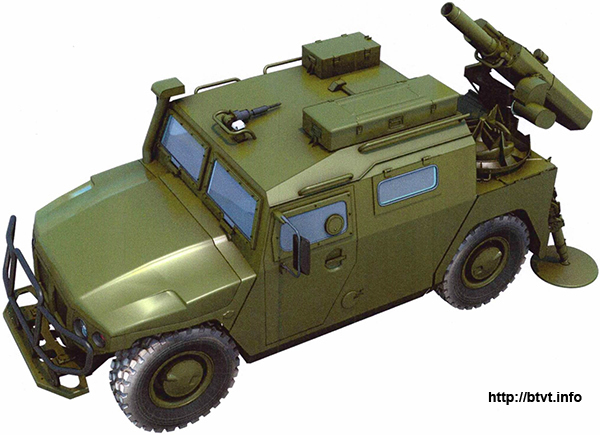
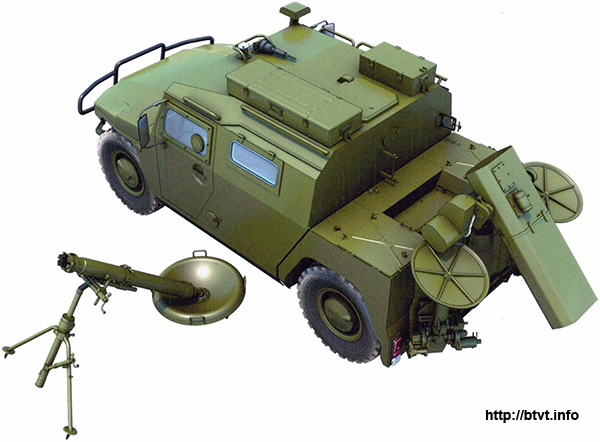
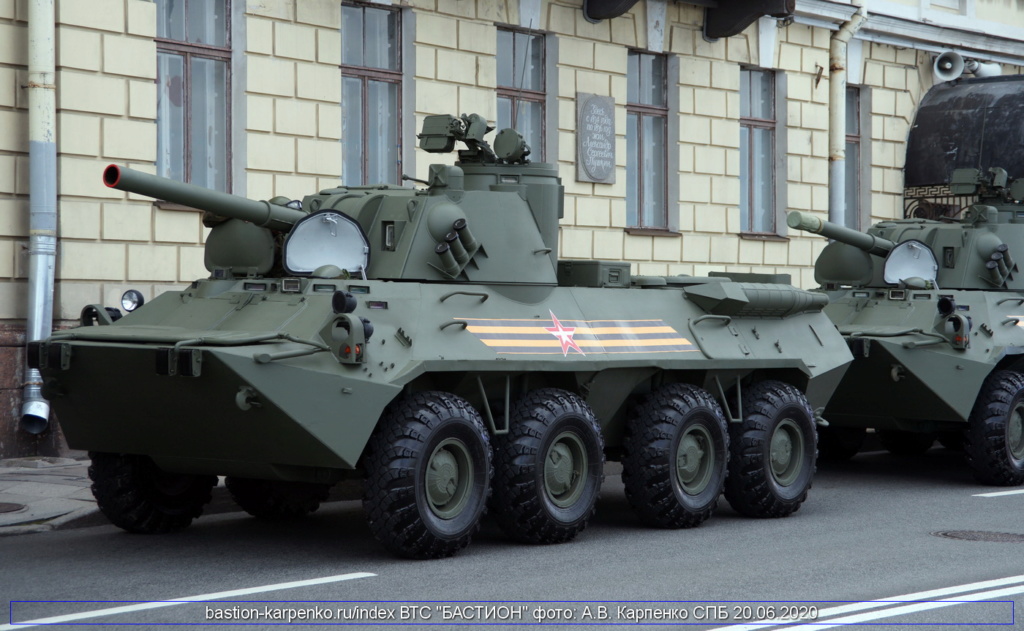
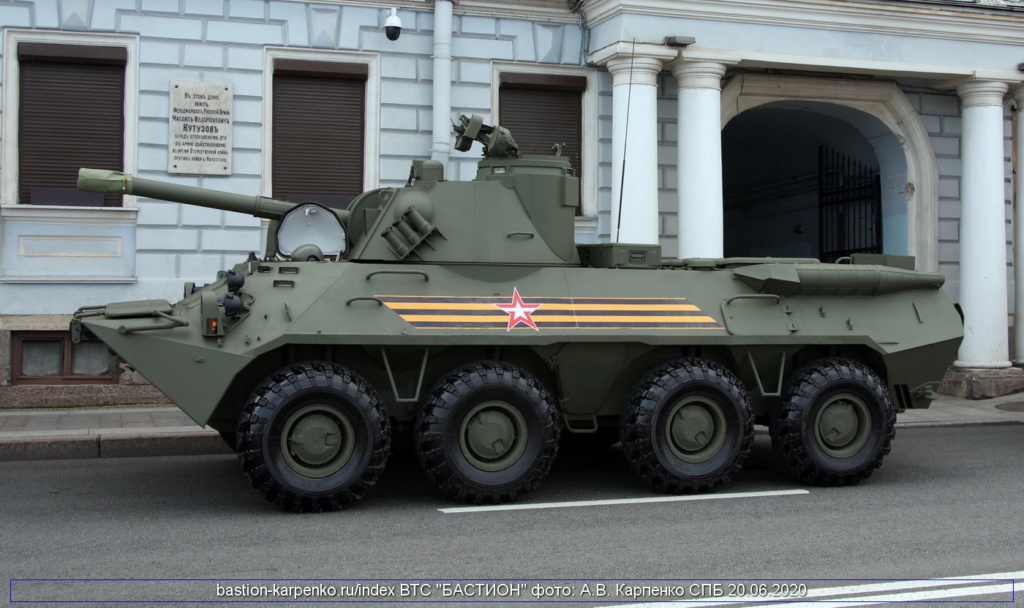

 SeigSoloyvov
SeigSoloyvov